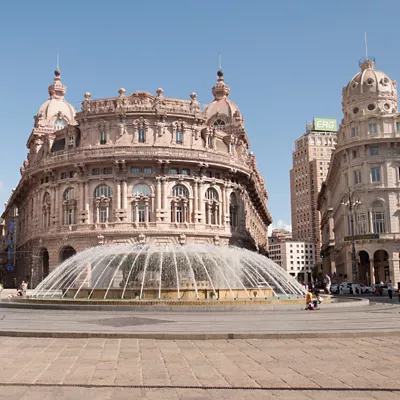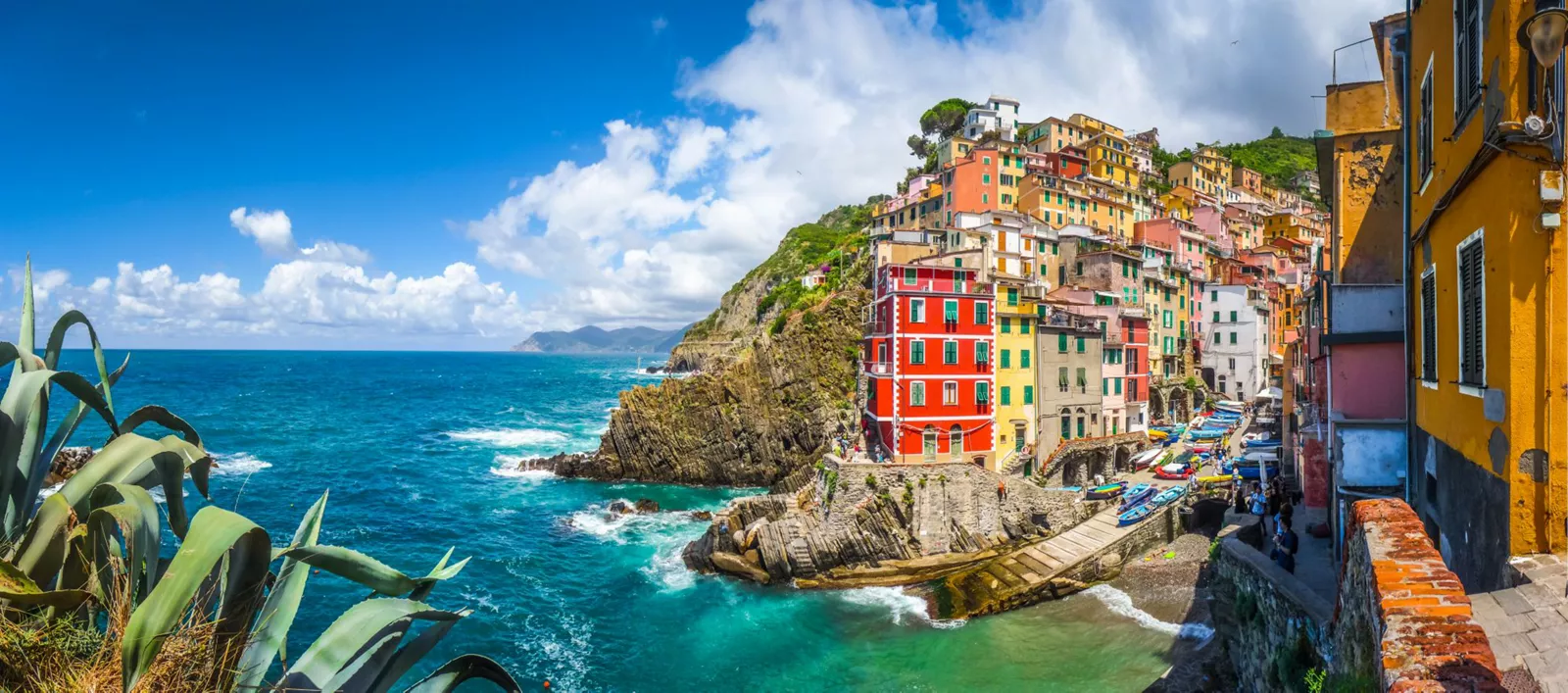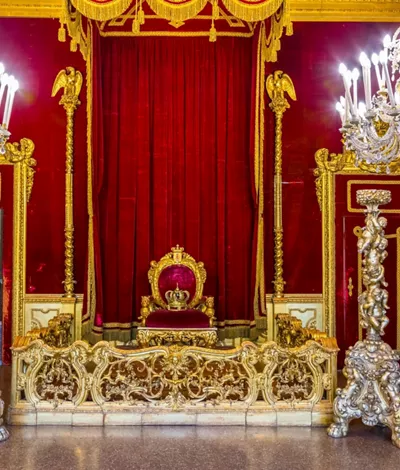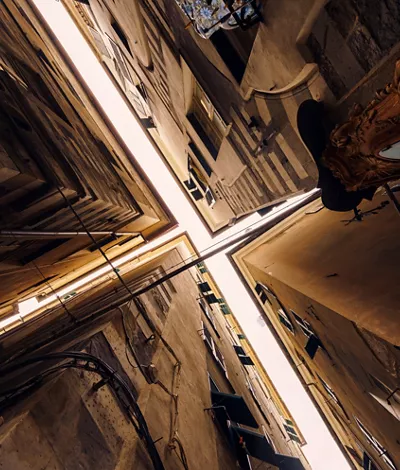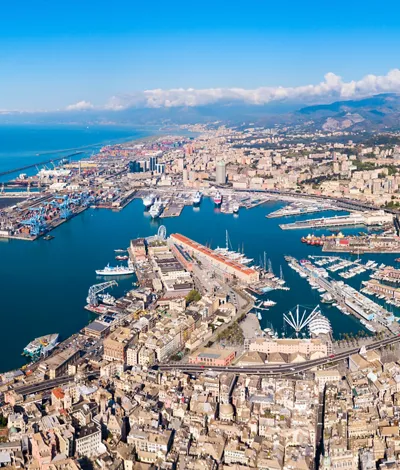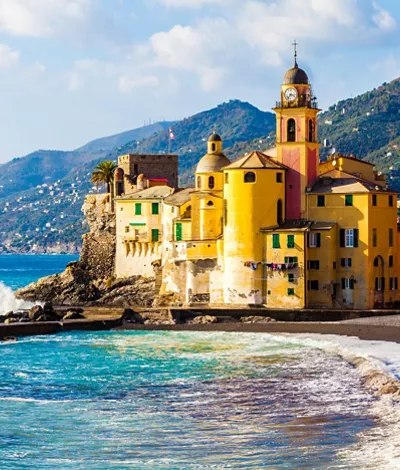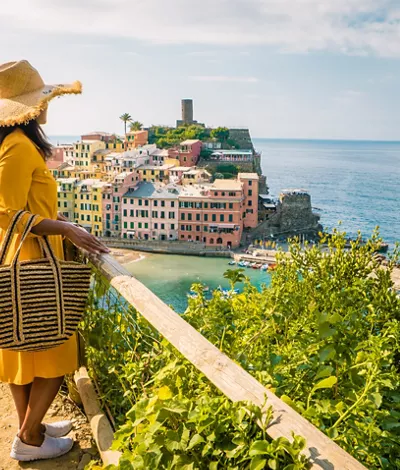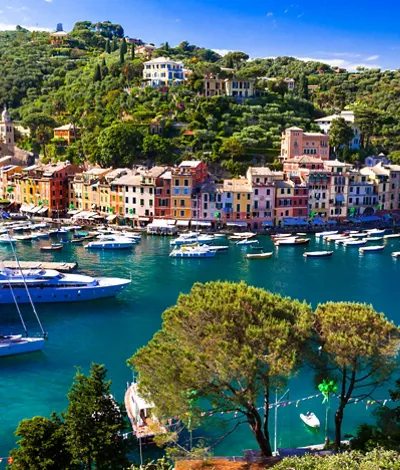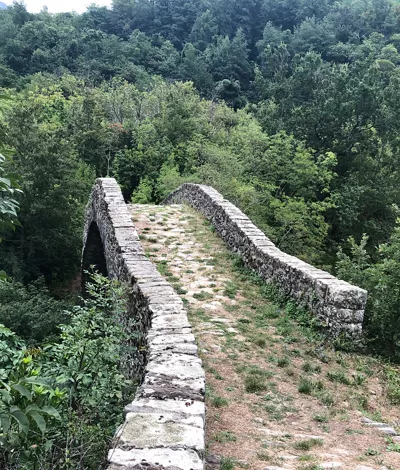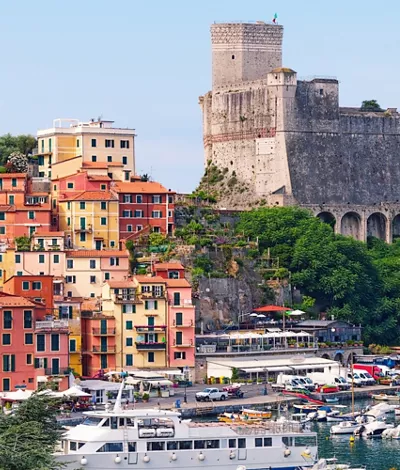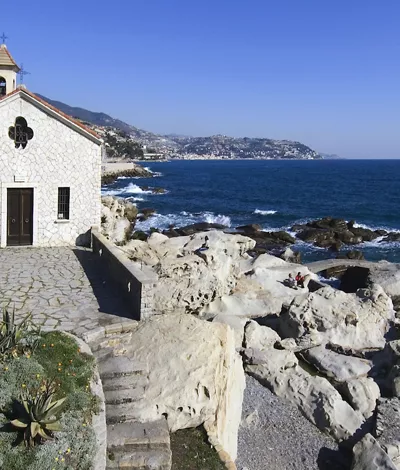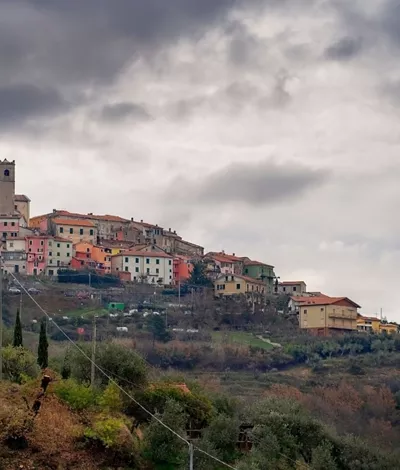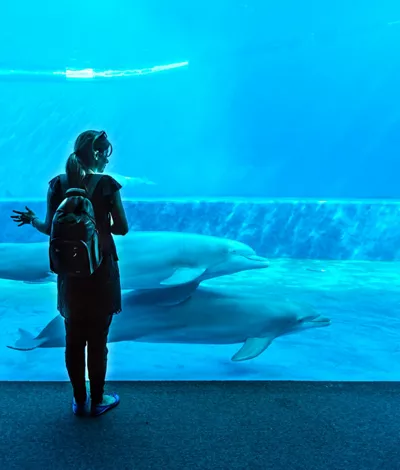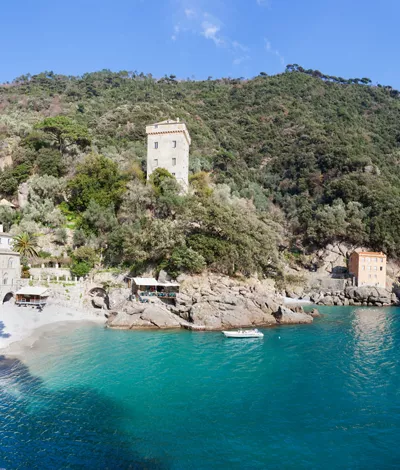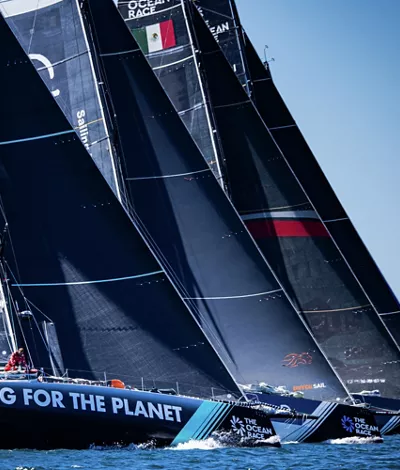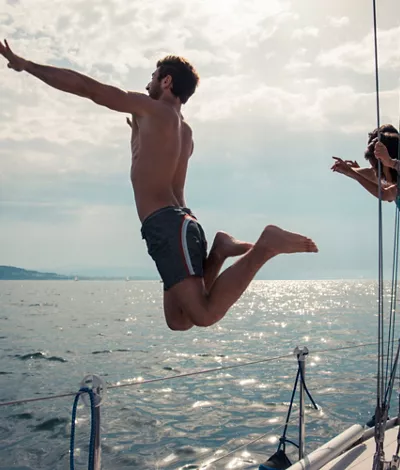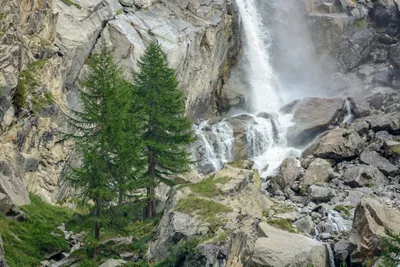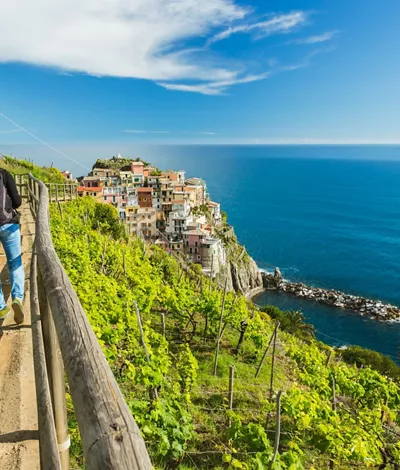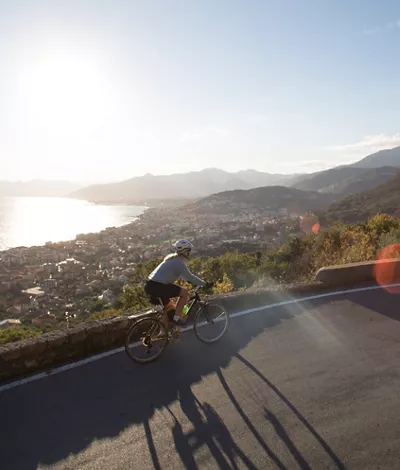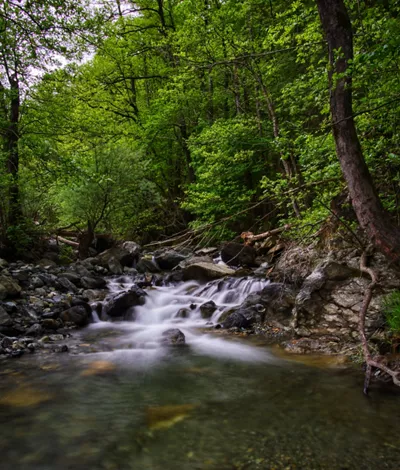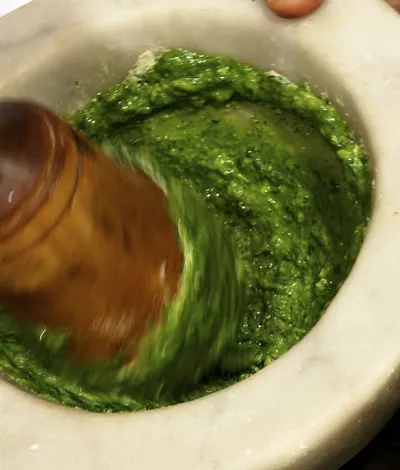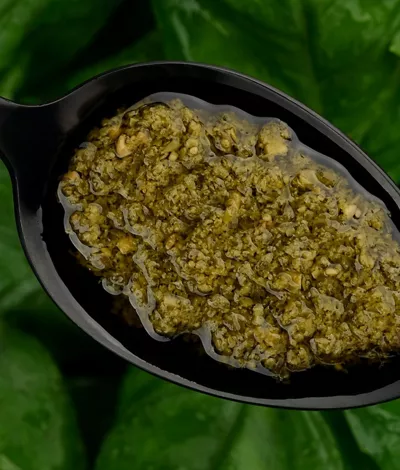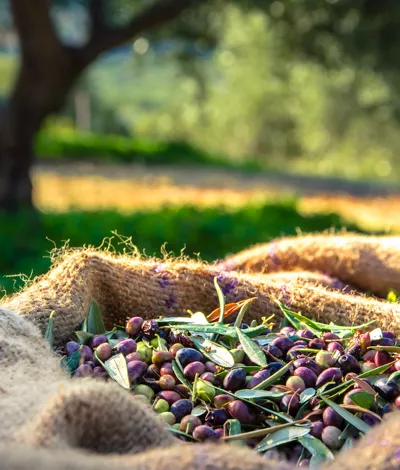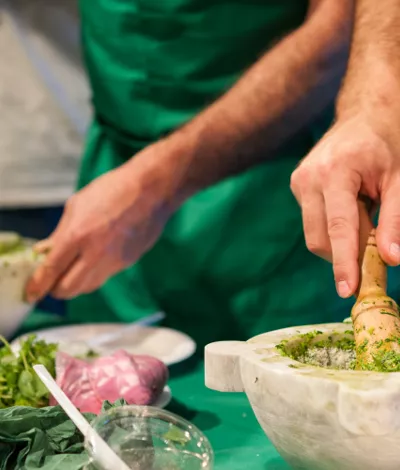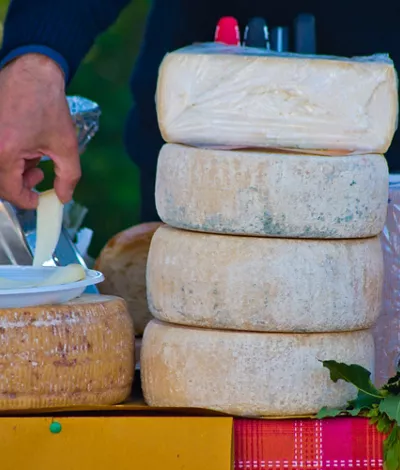Tucked-away villages, secret little beaches and superb nature: how enchanting Liguria is!
Liguria is a wonderful strip of land enclosed between the sea and the mountains, with pastel-coloured houses and breathtaking views. With lush unspoilt nature, many small towns to discover and an incomparable culinary tradition, it enraptures the eye and the heart.
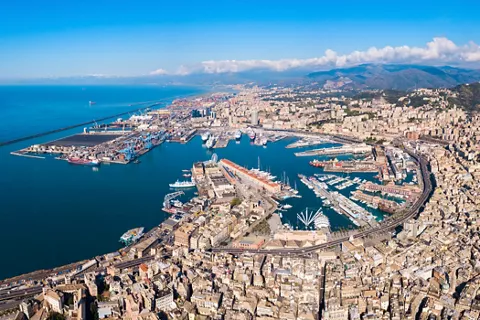
Genoa
Genoa is one of the most fascinating, unique and beautiful European cities, nestled between the Ligurian mountains and the azure blue sea. Not everyone knows that Genoa boasts the largest historic centre in Europe. It is enchanting to get lost among its maze of alleyways, and quite the workout with the hills. Then there are the monumental streets built by noble families of times gone by and the bustling, kilometre-long promenade, not to mention the unforgettable food.
Discover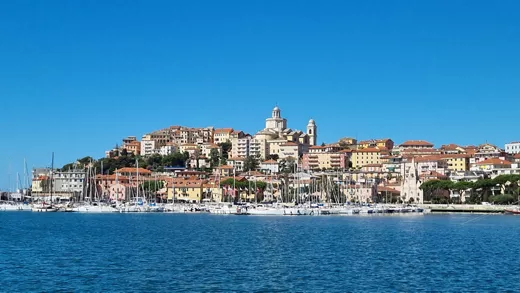
Imperia
Greenery, olive oil and history in western Liguria The Ligurian province of Imperia stretches along the western shore of the Italian Riviera, home to several famous seaside towns, including Bordighera and Sanremo, which hosts the well-known Italian Song Festival. The area is known for producing oil and olives. The village of Taggia cultivates the taggiasca variety of olive, small and dark, characterised by a delicate flavour. The city of Imperia boats the largest church in Liguria: San Maurizio Cathedral, flanked by twin bell towers that rise up 36 metres. The Ligurian capital is also known for being the birthplace of writer Edmondo De Amicis, author of the famous novel Heart. The municipal library houses a faithful reconstruction of his study, with photographs, notes and a collection of over 3,000 books. If you find yourself near Imperia, be sure not to miss the chance to visit to the Pasticceria Piccardo, which was founded in 1905 and is now listed as a Locali Storici d’Italia (Historic Establishment of Italy). The story goes that Fausto Coppi, with a 14-minute lead, abandoned the 1946 Milan-San Remo cycle race and popped in for a coffee.
Discover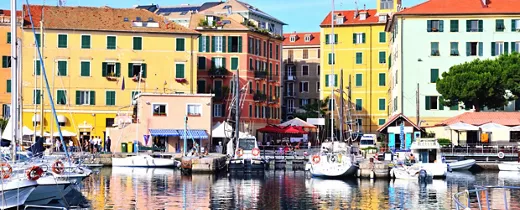
Savona
A port surrounded by artistic and natural beauty Located on the western Ligurian Riviera, Savona is considered one of the most important Mediterranean ports in terms of tourism and trade. One of its symbols is undoubtedly the Priamar, a large 16th century military fortress perched on the coast. Built by the Genoese to demonstrate their supremacy over the city, today it is home to various cultural associations. Another place of interest is the Torre della Quarda or Torre Leon Pancaldo, better known simply as “Torretta”. Among the religious buildings, we recommend the Cathedral of the Assumption and the Gothic-style Sistine Chapel commissioned by Pope Sixtus IV, not to be confused with its Roman namesake. Among the natural beauties, the Toirano Caves, a suggestive itinerary among stalactites, stalagmites and ancient traces of prehistoric human beings, the Borgio Verezzi Caves and Mount Beigua with its nature park, are noteworthy. A compulsory stop at the Le Caravelle Aquatic Park, one of the main tourist attractions on the Ligurian Riviera, and in nearby Alassio, with its old town centre, beaches and famous wall.
Discover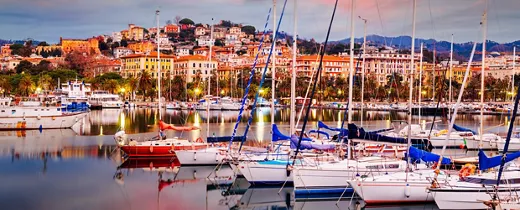
La Spezia
In the midst of the Cinque Terre, Portovenere, Lerici and Tellaro, all wonderful places and worthy tourist destinations, La Spezia is often seen as a departure or transit point for the smaller, picturesque localities around it, yet it offers pleasant surprises: museums, the lively Via del Prione, the renovated Piazza Giuseppe Verdi and the Morin promenade, with its spectacular views of the gulf and the Apuan Alps. Neatly 19th-century in parts, industrial and modern, it was a destination of choice for the Grand Tour in the 18th and 19th centuries and the residence of the poets George Byron and Percy Bysshe Shelley. At the time, the town was merely a charming village of 3,000 souls. There was no Arsenal, factory or port infrastructure, and no dyke to break the magic of a bay 9 kilometres wide and 13 deep. Napoleon, who described the Gulf of La Spezia as 'the most beautiful in the universe', saw it as an ideal place to build a military port. Count Cavour took up this dream and moved the arsenal of the Navy of the Kingdom of Sardinia from Genoa to La Spezia (1853), transforming the city's urban layout from a small walled town to a large maritime stronghold.
Discover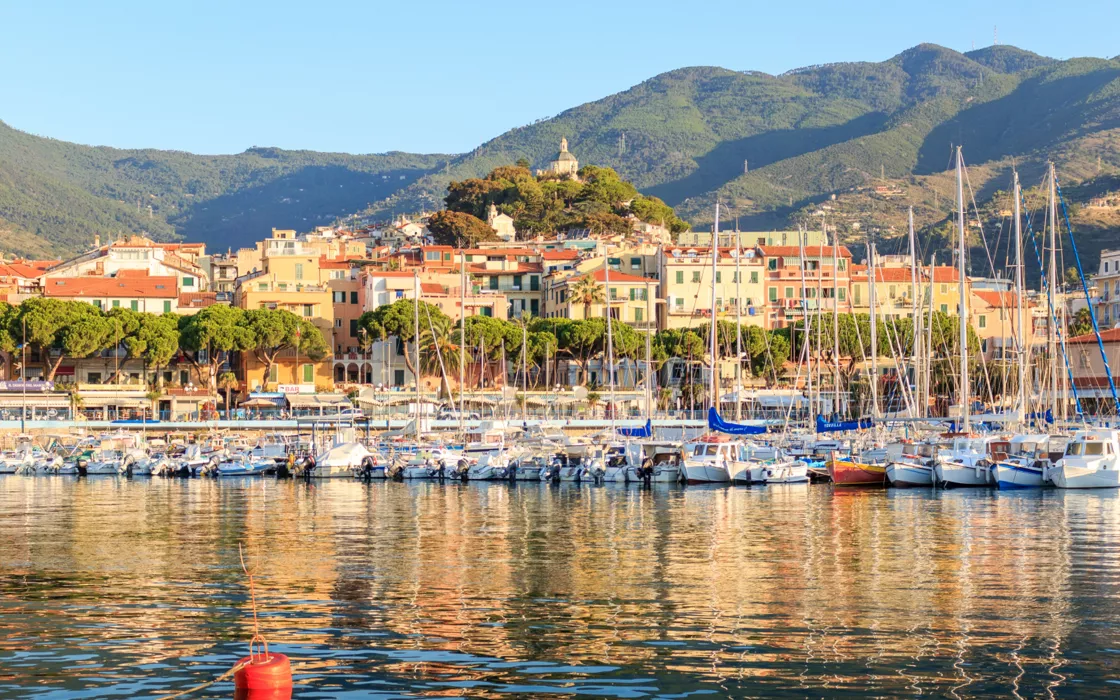
What to see in Sanremo: a 5-day itinerary to discover the city during the Festival
Learn more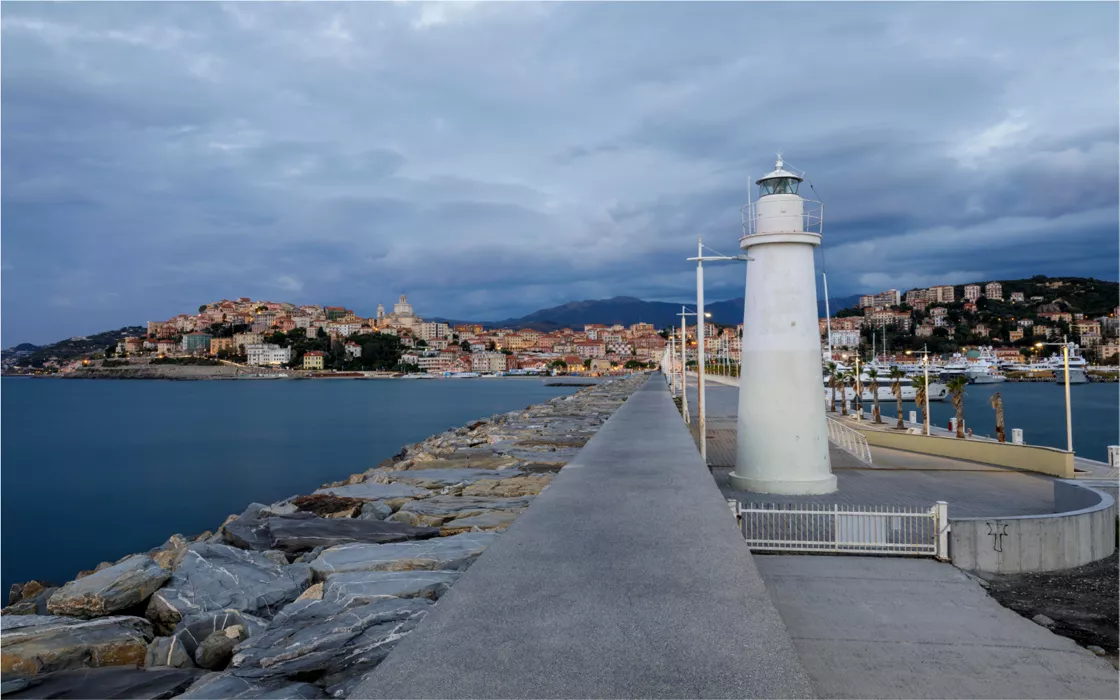
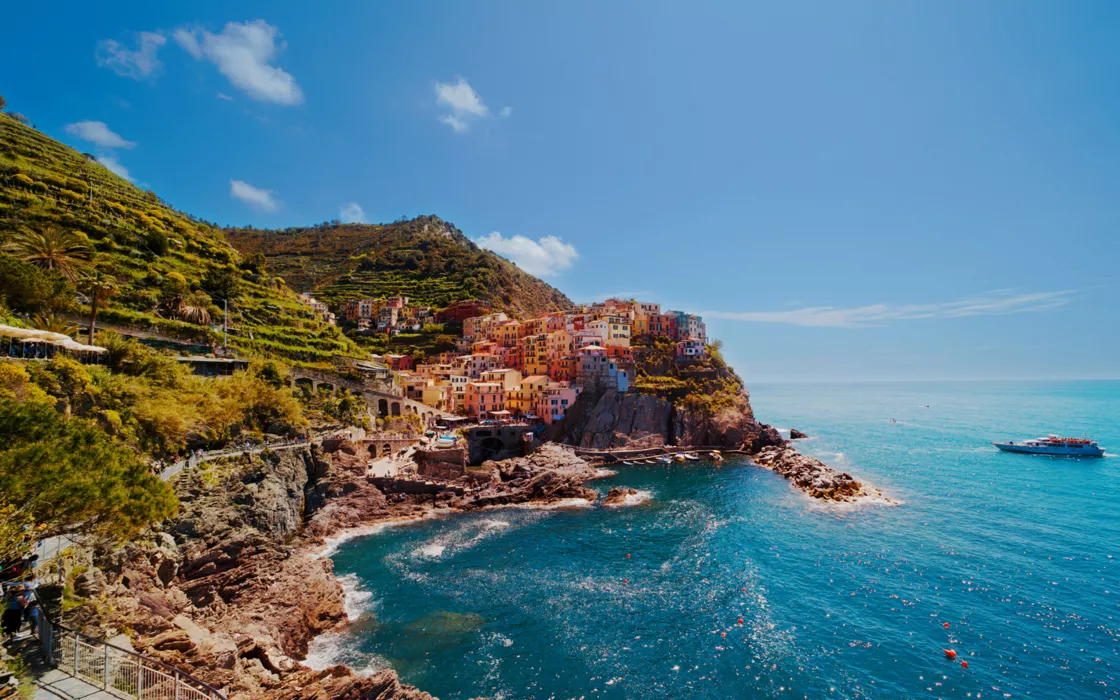

Cycling the Via delle Cinque Terre is an unforgettable adventure
Learn more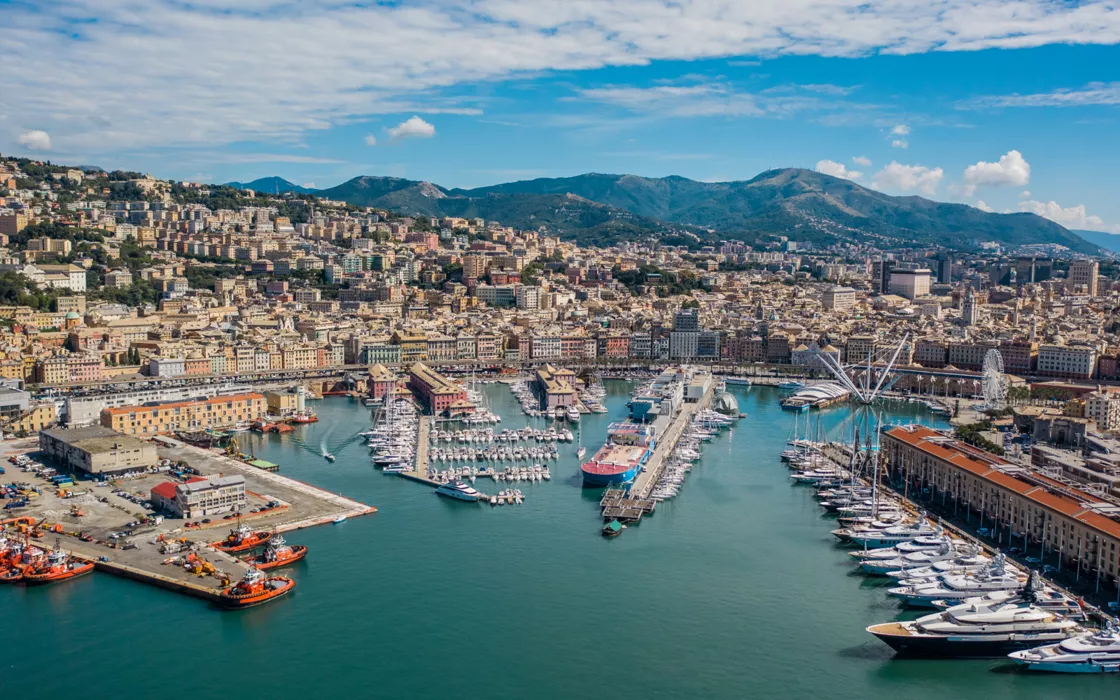
A wealth of beauty between bays and historic towns
San Remo and the Riviera dei Fiori, the carruggi and the Aquarium in Genoa, the villages of the Cinque Terre, the beaches of the Golfo dei Poeti and the island of Palmaria, a UNESCO World Heritage Site: Liguria, with its varied ecosystem and spectacular beauty, is bound to win you over.
